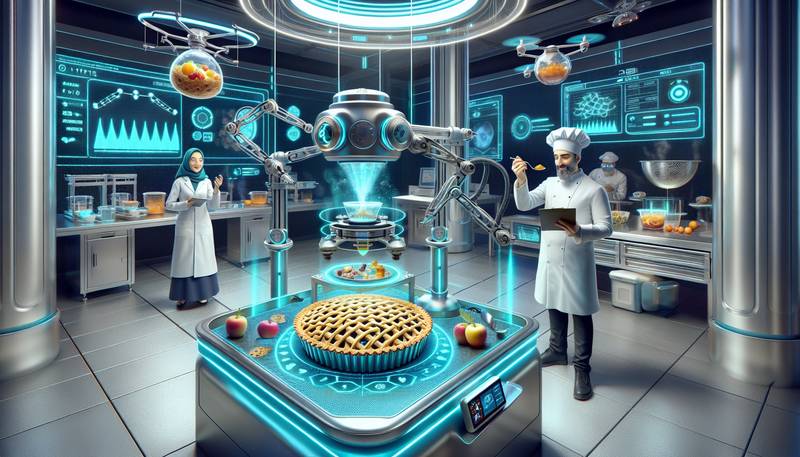Future of Food: How Tech is Transforming What We Eat

The way we produce, consume, and think about food is rapidly changing. From 3D printed meals to lab-grown meat, the future of food is being shaped by technology. This article will explore how tech is revolutionizing the food industry and what it means for our diets, our health, and our planet.
The Rise of Plant-Based and Lab-Grown Meats
In recent years, there has been a growing interest in alternative protein sources, particularly plant-based and lab-grown meats. Companies like Beyond Meat and Impossible Foods have created plant-based burgers that taste and feel like real beef, while startups like Memphis Meats are producing meat from animal cells in a lab. These innovations are not only appealing to vegetarians and vegans, but also to environmentally-conscious consumers who are looking for ways to reduce their carbon footprint. With the world's population expected to reach 9.7 billion by 2050, alternative proteins could play a crucial role in feeding everyone sustainably.
Personalized Nutrition and 3D Printed Meals
Technology is also making it possible to tailor our diets to our individual needs. Companies like Nutrigenomix and DNAfit offer genetic testing to determine how our bodies respond to different foods, allowing us to create personalized meal plans. In the future, we may see 3D printers in our kitchens, printing out meals that are customized to our nutritional requirements. This could be particularly beneficial for people with food allergies or dietary restrictions.
Vertical Farming and Urban Agriculture
As urbanization continues to increase, we need to find new ways to grow food in cities. Vertical farming, which involves growing crops in stacked layers, is one solution. These farms can be located in warehouses, shipping containers, or even on rooftops, and they use less water and space than traditional agriculture. Urban agriculture also includes community gardens, rooftop greenhouses, and hydroponic systems, which can provide fresh produce to city-dwellers while reducing transportation emissions.
Blockchain and Food Traceability
Blockchain technology is being used to improve food traceability and safety. By recording every step of the food supply chain on a decentralized ledger, blockchain can provide transparency and accountability. This means that consumers can see exactly where their food comes from and how it was produced. In the event of a food safety issue, blockchain can help pinpoint the source of the problem quickly, potentially saving lives.
The Impact of Tech on Food Waste
Food waste is a major issue, with approximately one-third of all food produced globally going to waste. Technology can help reduce this waste in several ways. For example, sensors can monitor the freshness of produce and alert retailers when it needs to be sold or donated. Apps like Too Good To Go connect consumers with restaurants and grocery stores that have surplus food, allowing them to buy it at a discounted price. And smart packaging can extend the shelf life of food, reducing the amount that gets thrown away.
The Future of Food Delivery
Food delivery apps like UberEats and DoorDash have already transformed the way we order takeout. In the future, we may see drones and autonomous vehicles delivering our meals. This could make food delivery faster, more efficient, and more environmentally-friendly. And with the rise of ghost kitchens - restaurants that only offer delivery and takeout - we may see even more options for convenient, on-demand meals.
The Role of Tech in Sustainable Agriculture
Technology is also being used to make agriculture more sustainable. Precision farming uses data and analytics to optimize the use of resources like water, fertilizer, and pesticides. Drones and satellites can monitor crop health and detect pests and diseases early on. And new farming techniques like aquaponics and aeroponics use less water and land than traditional methods. By making agriculture more efficient and less resource-intensive, technology can help us feed the world while protecting the environment.
Conclusion
The future of food is an exciting and rapidly-evolving field. With advances in technology, we have the potential to create a food system that is more sustainable, more personalized, and more accessible. While there are still challenges to overcome, the possibilities are endless. So next time you sit down to eat, take a moment to appreciate the role that tech is playing in transforming what we eat.


